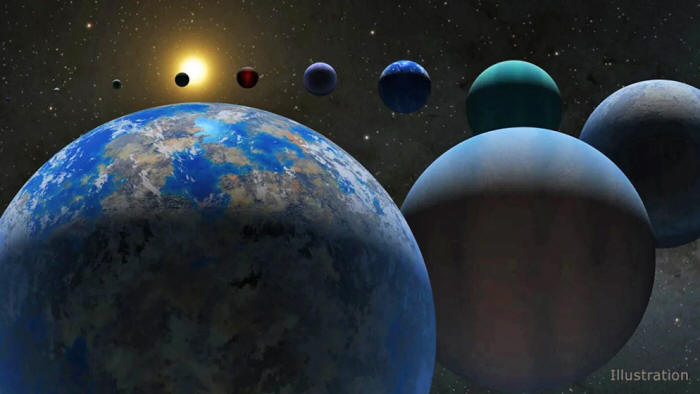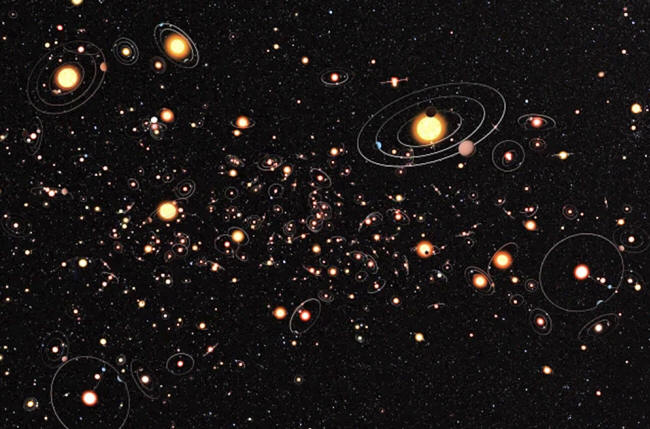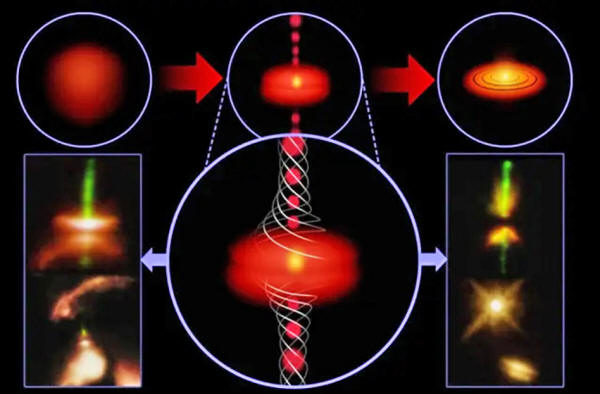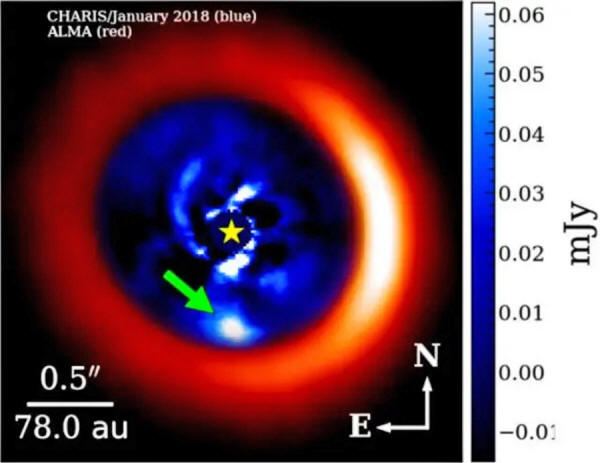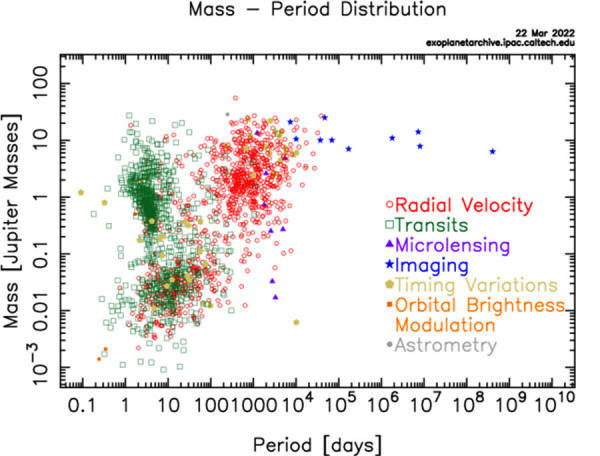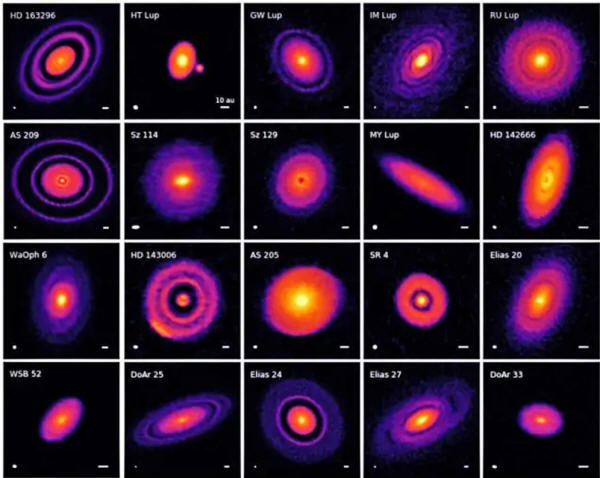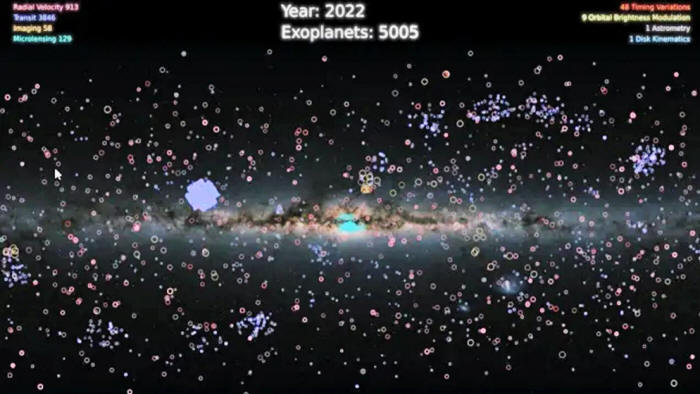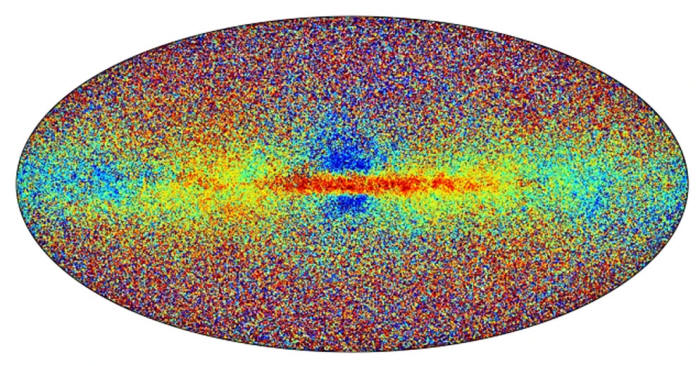|
by Ethan Siegel August 10, 2022 from BigThink Website
or exoplanets, look like? A variety of possibilities are shown in this illustration. Scientists discovered the first exoplanets in the 1990s. As of 2022, the tally stands at just over
5,000
confirmed exoplanets.
Unless you have a critical mass of heavy elements when your star first forms, planets, including rocky ones,
are practically
impossible.
These first extra-solar planets, now known collectively as exoplanets, were unusual compared to the ones found in our own Solar System:
These "hot Jupiters" were just the tip of the
iceberg, as they were merely the first that our detection technology
became sensitive to.
Based on the statistical likelihood of being
serendipitously aligned with an orbiting planet's geometry around
its parent star, it averaged out so that practically all stars
(between 80-100%) should possess planets.
But surprisingly, a closer look at the known exoplanets reveals a fascinating fact:
Here's the cosmic story of why.
such as young star clusters, the galactic center, or the centers of globular clusters, gravitational interactions could perturb the orbits of exoplanets, rendering them unstable. However, this may not be the explanation as to why no planets have been found in globular clusters; perhaps the metal-poor nature of the clusters examined
is why no planets are
present.
Both of them start off the same way:
Inevitably, whichever overdensity grows the most massive the most
quickly begins to form a proto-star, and the environment around that
proto-star forms what we call a circumstellar disk.
The two ways that planets can then form, given these conditions, are as follows:
asymmetric clumps of matter contract all the way down in one dimension first, where they then start to spin. That "plane" is where the planets form, with that process repeating itself on smaller scales around giant planets: forming circumplanetary disks
that lead to a lunar system. K. Stabelfeldt (JPL) and NASA
Even better:
This occurred at such a large radius from the parent star, and well beyond the radius at which core accretion processes can explain the formation of such a massive planet so early in a stellar system's life cycle, that it could only have formed via the disk instability scenario.
We now believe that the overwhelming majority of gas giant
planets formed at extremely large distances from their parent stars
likely formed via the disk instability scenario, while the closer-in
planets must have formed via the core accretion scenario.
A dusty disk of protoplanetary material (red) surrounds the inner stellar system (blue) around the young star AB Aurigae (yellow star), with a candidate planet revealed in the location identified by the green arrow. This object has properties that render it incompatible
with
the standard core accretion scenario.
The reality is that we don't have sufficient data to identify the overwhelming majority of Jupiter-sized planets at very large distances from their parent stars.
This may be something, given the coronagraphic capabilities
of new observatories like JWST and the presently under-construction
thirty meter-class ground-based telescopes here on Earth, that gets
remedied over the coming years.
Only stars with circumstellar disks that possess at least a critical threshold of heavy elements should be able to form planets via core accretion at all.
used to determine the properties of the first 5000+ (technically, 5005) exoplanets ever discovered. Although there are planets of all sizes and periods, we are presently biased toward larger, heavier planets that orbit smaller stars at shorter orbital distances. The outer planets in most stellar systems remain largely undiscovered, but those that have been discovered, largely through direct imaging, are difficult to explain
with the core accretion scenario.
When the Universe began some 13.8 billion years ago with the onset of the hot Big Bang, it rapidly formed the earliest atomic nuclei through nuclear fusion processes that occurred during those first 3-4 minutes.
Over the next few hundred thousand years, it was still too hot to form neutral atoms, but too cold for any further nuclear fusion reactions to occur.
Radioactive decays could
still occur, however, bringing an end to any unstable isotopes that
existed, including all the Universe's tritium and beryllium.
That last component - the tiny amount of lithium in the Universe - is the only element that falls into the "rock and metal" category.
With only one-part-in-a-billion of the Universe made of something other than hydrogen or helium, we can be confident that the very first stars of all, made out of this pristine material left over from the Big Bang, could not have formed any planets via core accretion.
A sample of 20 protoplanetary disks around young, infant stars, as measured by the Disk Substructures at High Angular Resolution Project: DSHARP. Observations such as these taught us that protoplanetary disks form primarily in a single plane, and tend to support the core accretion scenario of planet formation. The disk structures are seen in both
infrared and millimetre/sub-millimetre wavelengths.
If planets
and/or other rocky worlds are required for life (as
we know here on Earth), a plausible but
uncertain conjecture, then life could not have come into existence
in the Universe until enough heavy elements existed to form planets. Despite having at least hundreds of thousands of stars inside, no planets were ever found around any of them.
One possible reason put forth was that,
But there's another reason that must be considered in this new context:
In fact, that's a very compelling explanation.
An analysis of the red giant stars inside revealed that they contain only about 16% of the heavy elements found in the Sun, which may not be enough to form planets via core accretion.
Omega Centauri, by
contrast, had multiple periods of star formation inside, with the
most heavy element-poor stars having just ~0.5% of the heavy
elements that the Sun possesses, while the most heavy element-rich
stars have about ~25% of the heavy elements present in the Sun.
That means, all told, that,
the first 5000+ exoplanets we know of, and where they're located on the sky. Circles show location and size of orbit, while their color indicates the detection method. Note that the clustering features are dependent on where we've been looking, not necessarily on where planets are preferentially found. No planets have been found within globular clusters, including the long-imaged 47 Tucanae and Omega Centauri.
There's,
In other words,
Below about 20-30% the heavy element
abundance of the Sun, there's a "cliff" in the exoplanet population,
with an extremely steep decline in exoplanet abundance altogether.
were different than the stars today: metal-free, extremely massive, and destined for a supernova surrounded by a cocoon of gas. Planets, at least planets formed via the core accretion scenario, should be all but impossible for many hundreds of millions of years after these first stars
come
into existence.
But they're only capable of increasing the heavy element abundance up to about ~0.001% of what we find in the Sun:
This means that many generations of stars, all processing, re-processing, and recycling the detritus from each prior generation, must exist in order to build up enough heavy elements to form a rock-and-metal-rich planet.
Until a critical threshold of those heavy elements is met, Earth-like planets are impossible.
the heavy element abundances of more than 6 million stars within the Milky Way. Stars in red, orange, and yellow are all rich enough in heavy elements that they should have planets; green and cyan-coded stars should only rarely have planets, and stars coded blue or violet should have absolutely no planets at all around them. Note that the central plane of the galactic disk, extending all the way into the galactic core,
has the potential for
habitable, rocky planets.
This remains a true statement, but it's no longer a smart bet to presume that all, or almost all, of the stars in the Universe possess planets.
Instead, it looks like
planets are most abundant where the heavy elements that are needed
to form them via core accretion are also most abundant, and that the
number of planets that exists drops off as their parent stars
possess fewer and fewer elements.
Below a certain threshold, there should be no planets that form via core accretion - including all potential Earth-like planets - at all.
It took billions of years
before most newborn stars would have planets around them, and has
severe implications that restrict the possibilities for life
(again, life as we know so far) in
globular clusters, the outskirts of galaxies, and all throughout the
Universe at early cosmic times.
Early on, and anywhere the heavy element abundance remains low, the
needed ingredients simply weren't around.
|


